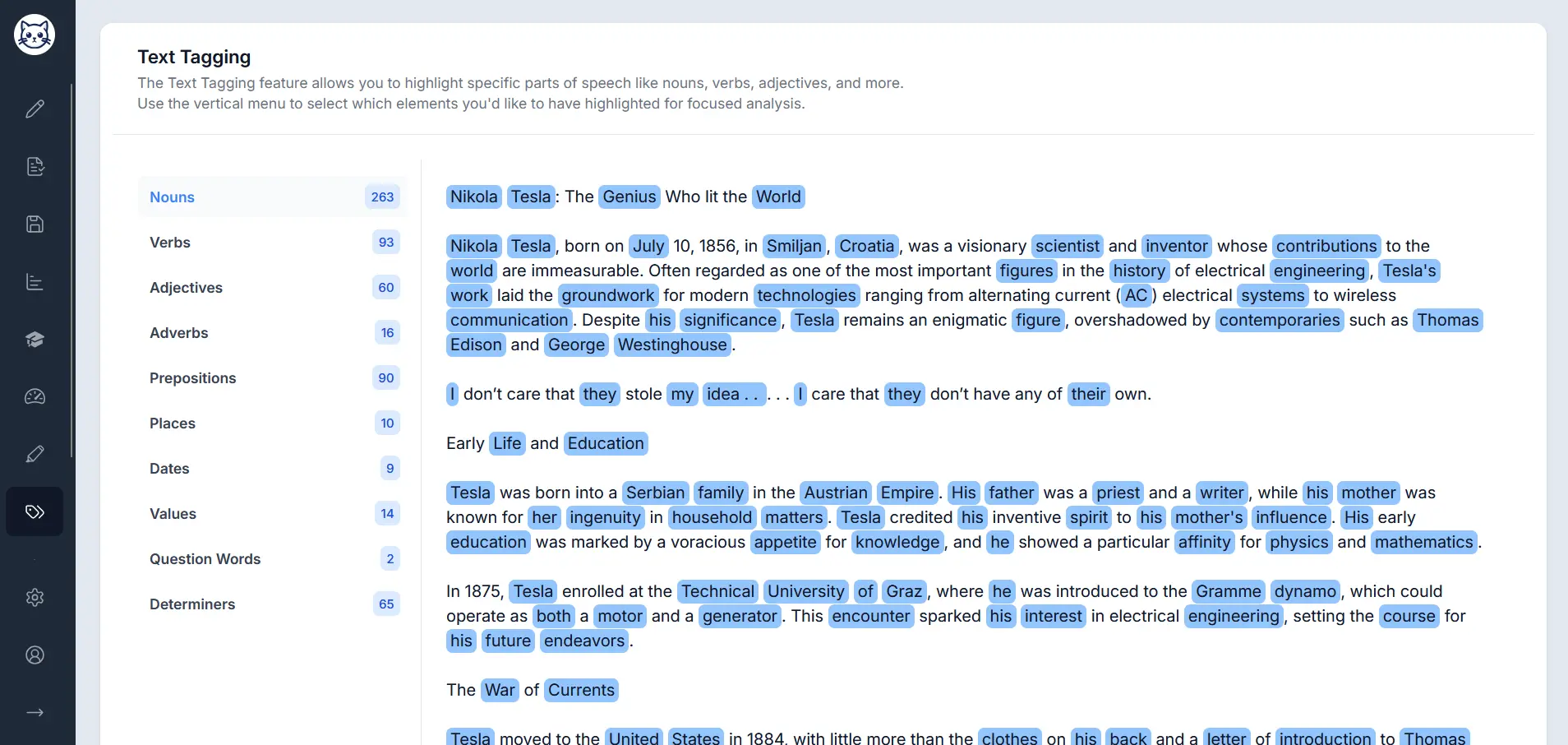Free Preposition Finder Tool
Find and highlight prepositions in any text with our free online preposition identifier. Discover common prepositions, prepositional phrases, and understand how to find prepositions in sentences. Perfect for students, teachers, ESL learners, and writers who want to master prepositional usage.
Try these examples:

Advanced Parts of Speech Analysis
Go beyond basic preposition detection with Gorby's text tagging feature. Analyze nouns, verbs, adjectives, and all parts of speech with comprehensive statistics.
